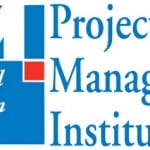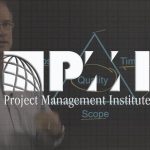PMBOK® Guide 7th Edition
PMBOK® Guide 7th Edition
This blog will be useful to candidates considering PMP exam preparation according to either the existing guidance or the new exam format to be released on July 1, 2020. It addresses what we know about changes to the PMBOK® Guide and loose relationship to the exam.
PMI announced the development of the PMBOK® Guide Seventh Edition at the 2019 PMI Global Congress in Philadelphia during October. The call for Development and Review Team members was posted on ProjectManagement.com on June 19, 2019 and closed on July 19. 2019. No committed delivery date was provided, although the team is focused on completion within a year, placing initial delivery in 3Q 2020.
There is no timing relationship between the update to the PMBOK® Guide and the change to the PMP exam that will occur on July 1, 2020. Both are related, however, to the new Project Economy focus of PMI, often associated with the term “Massive Digital Transformation”. More on the relationship (or more correctly the widening gap) between the PMBOK® Guide and the exam later in this blog.
There are 12 core team members responsible for the development of the next version of the PMBOK ® Guide. If you want to monitor various status for the development and release of the PMBOK® Guide Seventh Edition, your best course of action is to use your PMI account on ProjectManagement.Com and search for regular updates made in The Critical Path blog which is hosted by the key members of the development team.
If you want to participate in the initial review of the new Guide, which is the primary opportunity remaining, you might want to participate on one of the translation teams (if you qualify). This opportunity was opened on December 5th (today as I write this blog), and will close by the end of the month (December 2019).
The PMBOK® Guide 7th Edition will be available in 11 languages: English, Arabic, Chinese, French, German, Italian, Japanese, Korean, Portuguese (Brazilian), Russian, and Spanish. Meetings for translation reviews are scheduled for February 27 to March 1, 2020 in Tokyo (Chinese, Japanese, and Korean) and March 5-8, 2020 in London (French, German, Italian, Portuguese, Russian, and Spanish). The team is working very quickly to affect creation of the new PMBOK® Guide.
The most significant change revealed at the Congress and by the team is a shift from the historic Process Group emphasis toward an emphasis on a Principle Based Standard. The (ANSI) standards element of the Guide may remain more process based, at least initially, while the reference and guidance within the PMBOK® Guide will shift to the Principles based focused. Nader Rad, one of the 12 core development team members provides an overview of the Principle based approach in his blog on ProjectManagement.com.
The Gap
Perhaps one of the more controversial topics discussed in the corridors during the Global Congress (and at dining tables and during presentations…) was the widening gap between the PMBOK® Guide and the PMP exam. During each PMP certification exam preparation course, I have historically emphasized the relationships between the processes within the five Process Groups though spend considerably more time on principles, context, and situational analysis. Several PMI directors and team leads were actually defensive in their justification of the divide between the exam and the PMBOK® Guide during their formal presentations at the Congress. (Fuel for the many discussions.)
The exam has never been directly based on the PMBOK® Guide. The change cycles for the PMBOK® Guide and the PMP exam have played leap frog every three to four years, creating at the least a perception of a planned schedule. PMI has always stated, and I have regularly shared, that the two development teams are intentionally exclusive of one another for a variety of quality, control, and efficiency reasons.
Nevertheless, with the current, near simultaneous releases, the two teams are being very defensive and providing regular justifications for the changes and the differences. (In my opinion, the PMBOK® Guide development team is more excited about the change prospects and attempting to clear barriers to their progress, albeit creating an air of ‘exclusivity’ in the process.) All change is perceived as pain, and with the scale of the proposed changes, the perceived pain is greater. Imagine the almost one million PMP holders who worked so hard to memorize (or as I encourage learn to understand) the relationship between the (now) 49 processes.
Effecting a change from Process to Principle Focus, and affect adoption within a year is a daunting task. Kudus to the team for accepting the challenge. I have realistic expectations for the first draft. Change this massive will neither occur easily no be near final.
In a December webinar called ‘Busting Myths’, staff members Mike DePrisco (VP, PMI Global Solutions), Dani Ritter (Product Manager, PMI Standards), and Marv Nelson (Product Specialist, PMI Standards) attempted a pop culture approach at clarifying some of the PMBOK® Guide Changes:
- Transformation won’t have any impact on standards – MYTH BUSTED!
Project leaders have the right to select the approach based on outcomes across methodologies and processes. (This has been referred to as Tailoring in the PMBOK® Guide 6th edition.) Engagement with stakeholders, and with PMI customers, must change. New PMI standards will introduce digital tools for use in day-to-day work.
- The PMBOK Guide is the Standard – Myth Half Busted
The PMBOK® Guide is in two parts. The Standard (the smaller back third of the book) will continue to be ANSI approved. The remainder is the Guide to the PM Body of Knowledge and will change to a Principles based document. It will continue to expand the Broader knowledge of Project Management. (In my opinion, this constantly expanding broader project knowledge complicates exam preparation, practitioner focus on valued/valuable skill sets, and what MUST be considered best practices versus merely alternative approaches. Mastery requires at least an understanding of the available alternatives, although exposure and experience with the growing set is impossible within a week’s course setting.)
In the vocabulary of the webinar presenters, the PMBOK® Guide will become a systems approach. Organized around Performance Domains. The new design, it is hoped, will illuminate the complexity of process interactions, while showing how interactivity influences project outcomes.
The new approach will better define Predictive, Agile, and Hybrid. Predicting outcomes rather than describing any particular approach. (For such a comprehensive set of guidance, I suspect the Guide will need to become multiple volumes – and I suggest this with only the slightest sarcasm.)
- The PMBOK Guide is the test prep tool to study for the PMP® exam – MYTH BUSTED
PMBOK® is just a guide to a vast body of knowledge, and is not meant as a test prep tool. Just an input to the testing preparation process. (It has always been a massive input to digest, so we hope the new exam prep materials clarifies that which is relevant to the exam candidate versus that which is irrelevant to successful exam completion.)
PMI is extremely concerned that practitioners are not using the guide after passing the exam(s). The primary changes to the PMBOK are designed to make it a better tool after certification, throughout their career. (I once had a large set of encyclopedias at home, and found them hard to donate to a charitable cause. It is clear that Digital Transformation will be essential to the adoption of an increasingly larger standard and guide.)
- PMI Only Supports a Predictive Approach for solving projects – MYTH BUSTED
The webinar team declared that this is historically true, although there a new variety of approaches. (In our PMP certification course and video series we spend extensive time identifying the variety of Agile approaches. This has been an element of exam preparation lending to successful certification for our students for better than three years.) The new standard will be based on Principles rather than Processes. It will no longer be a prescriptive ‘how to’, instead governing principles to provide outcomes.
- PMI Is abandoning ANSI and ISO TC258 support – MYTH BUSTED
PMI is committed to the work of both ANSI and ISO TC258, and affirm PMI’s leadership in both as appropriate (although appropriate participation was not clarified). Webinar presenters cited ‘Full representation where it makes sense’.
ANSI is a US standard. ISO TC258 is an International standard. (Given PMI’s expanding international focus, it should come as no surprise that the PMBOK® Guide would incorporate or directly adopt a more international focus.)
- PMI Working with ‘customers’ to develop new focus and content. – TRUE
(Both within the webinar and at the 2019 PMI Global Congress, PMI failed to clearly identify who leadership considers to be the primary PMI customer constituency. Several examples offered during executive and director level presentations cited industries, corporations, or sponsors key to PMI financial success. I felt, as many attendees expressed, that PMI credential holders and Registered Education Providers who carried PMI through the first 50 years as contributors of time and money, were at best considered second tier customers moving forward. As individuals, we may be ‘users’ of the PMI product, though not the key influencers of future direction.)
Conclusion
Although not directly related to the July 1, 2020 PMP exam change, I perceive that the change to the PMBOK® Guide 7th Edition will have a more far reaching and influential impact on the future of Project Management. You can count on my incorporation of related content in courses that I deliver toward mastery in your careers, whether or not they match the specified exam criteria.
Keep an eye out for early drafts. If you are not registered for ProjectManagement.com, create an account immediately after to complete reading this blog. The designers and reviewers are actively involved in the project management social fabric of ProjectManagement.com and the PMI website is slow to release new content. (Okay, our marketing team would like you to check out our additional content first – so read my entire recent PMI blog series first!)
I look forward to seeing you in the classroom or online!
You May Also Like
A Simple Introduction to Cisco CML2
0 3901 0Mark Jacob, Cisco Instructor, presents an introduction to Cisco Modeling Labs 2.0 or CML2.0, an upgrade to Cisco’s VIRL Personal Edition. Mark demonstrates Terminal Emulator access to console, as well as console access from within the CML2.0 product. Hello, I’m Mark Jacob, a Cisco Instructor and Network Instructor at Interface Technical Training. I’ve been using … Continue reading A Simple Introduction to Cisco CML2
Cable Testers and How to Use them in Network Environments
0 731 1This content is from our CompTIA Network + Video Certification Training Course. Start training today! In this video, CompTIA Network + instructor Rick Trader demonstrates how to use cable testers in network environments. Let’s look at some tools that we can use to test our different cables in our environment. Cable Testers Properly Wired Connectivity … Continue reading Cable Testers and How to Use them in Network Environments
Data Models in Business Analysis
0 200 0This video is from our PMI-PBA Business Analysis for IT Analysts and Project Managers (PMI-PBA)® Certification now available at Interface Technical Training. Also see Steve’s PMP Project Management Certification Course: Project Management Professional (PMP®) Certification Video Training PMBOK® 6th Edition Video Transcription: Data Models are part of the elicitation analysis in PMI-PBA. This is the way … Continue reading Data Models in Business Analysis



